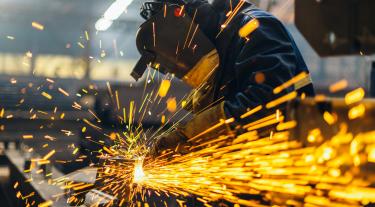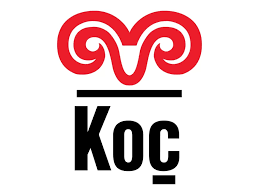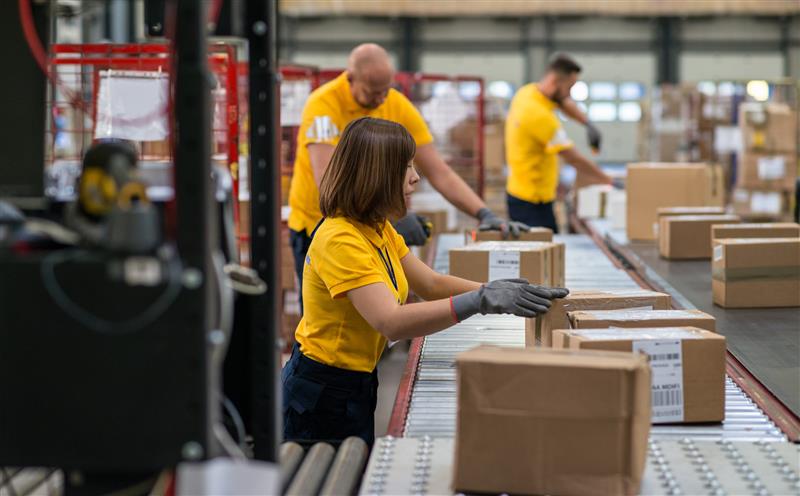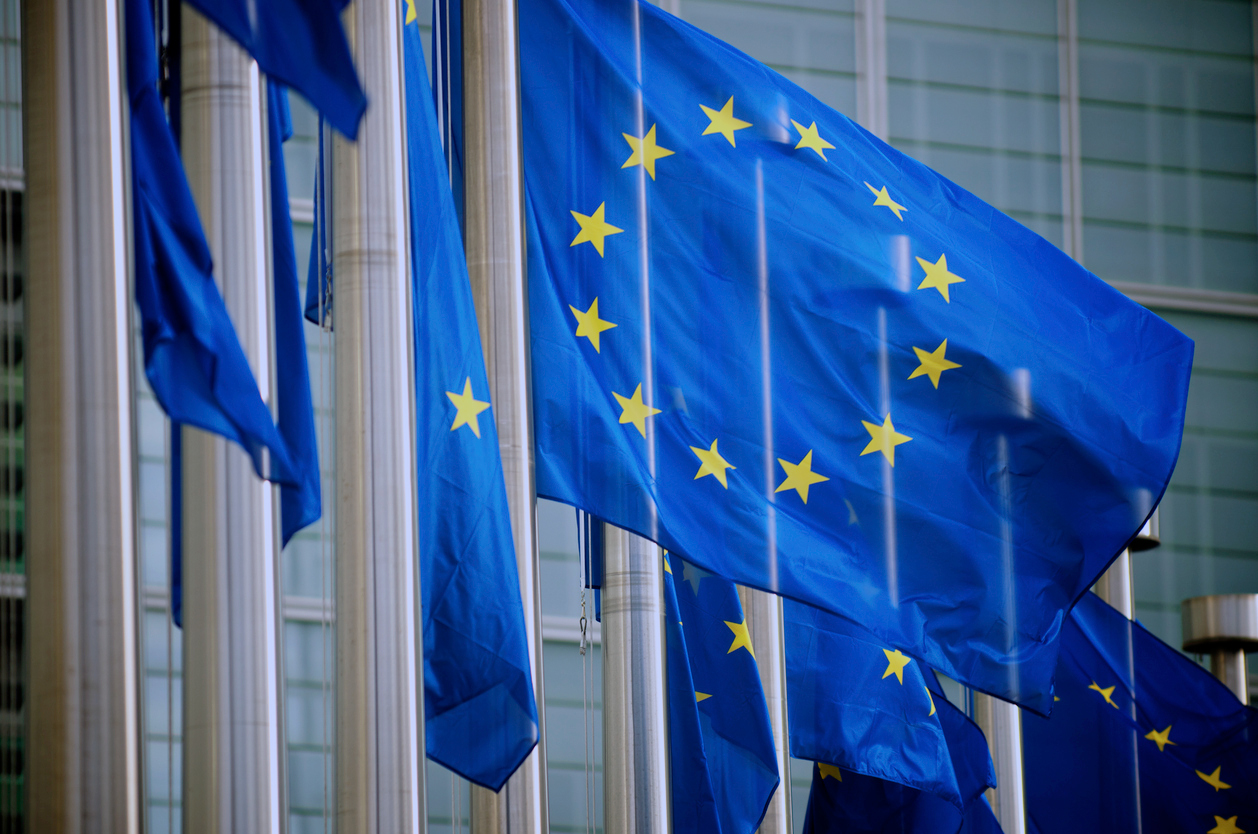The world’s first carbon border tax is being rolled out by the EU. Are you prepared for its full implementation? Here’s how the Carbon Border Adjustment Mechanism (CBAM) will affect companies across Europe that import or export steel, iron and aluminium into the EU.

Note: Since this insight was published, the EU Commission proposed amendments to some core sustainability reporting legislation as part of the EU Omnibus package (26 February 2025). The proposed amendments have now entered the EU’s legislative process. Until then, they remain under consideration. We will update these pages as the EU Parliament approves and confirms any changes. Find out more here.
Steel, iron and aluminium imports are among the first commodities to be subject to the EU’s Carbon Border Adjustment Mechanism (explore our CBAM briefing). These carbon intensive materials are extremely important to EU industry, be it for the automotive sector, construction or ICT. In 2022, total iron and steel imports were worth nearly $60 billion (€55 billion), and aluminium worth over $40 billion (€37 billion). At the same time, steel, iron and aluminium are critical for the EU’s green transition and a drive to build a more sustainable future, including renewable energy infrastructure, electric vehicles and charging points.
What industries will be impacted?
CBAM will affect companies both importing and exporting certain metals and goods into the EU, across a wide range of industries. In the case of businesses purchasing steel, iron and aluminium from outside the EU, examples include:
Construction: A construction company in Austria that primarily uses iron and steel in its projects and imports these due to the high volume needed.
ICT: A French electronics producer that imports aluminium to use in its Printed Circuit Boards, which are crucial for LED lighting.
Automotive: A German car manufacturer that imports aluminium from the UAE to use in car production due to its lightweight nature.
Energy: A Danish offshore wind developer that predominantly uses imported iron and steel in the production of wind turbines and their bases.
Mining: A global mining company operating in Poland that imports steel for use in mining equipment.
How will CBAM impact EU-based companies that import goods from outside the EU?
In the case of steel alone, the EU imported 28.9 million tonnes in 2022, with Italy, Belgium, Germany, the Netherlands and Spain as the top importers. In the case of aluminium, in 2023, 54% of aluminium in the EU came from net imports, with only 7% coming from primary production within the EU. The Netherlands and Germany are among the largest importers of the metal.
To create a level playing field, CBAM imposes a carbon cost on companies importing goods from outside the EU. This is similar to those who source from EU suppliers and already pay for the cost of carbon emissions under the EU Emissions Trading System (ETS). CBAM is thereby above all a financial tax on carbon, and so the primary impact is a financial one. As an importer, you may face:
THE COST OF CBAM CERTIFICATES
Example: An importer of steel products sources from a non-EU country with no carbon pricing mechanism and will need to buy CBAM certificates based on the emissions associated with the production of that steel. It is worth noting that carbon pricing in the EU is expected to rise to €140/tCO2e by 2030 as mentioned by the European Central Bank.
ABSORBED COSTS, SUCH AS RISING PRICES ON RAW MATERIALS
Example: A car manufacturer sources steel from a local supplier, who imports it from a non-EU country. The supplier increases steel prices to cover the CBAM certificate costs, and so in turn the car manufacturer faces higher costs for raw materials. This could then be reflected in consumer prices as costs trickle down.
SUPPLY CHAIN DISRUPTIONS
Example: A company sourcing from a non-EU country with no carbon pricing mechanism may switch suppliers if it has trouble obtaining accurate emissions data from its previous supplier for reporting purposes. Whilst this new supplier relationship is in its infancy, supply chain disruption may affect delivery times.
Companies importing goods into the EU will need to quantify the financial risk of CBAM and weigh up the advantages and disadvantages of production locations. Importers will also need to consider the advantages and disadvantages of choosing low emitting suppliers outside of the EU or potentially relocating manufacturing to inside the EU.
As an importer, CBAM compliance can help you to:
- Take accountability for the emissions associated with your products and build the cost-saving business case for decarbonisation or lower carbon products.
- Quantify the direct risk of not taking action to decarbonise your supply chain by putting a price on carbon.
- Improve supplier relationships. This is an opportunity to build efficient and collaborative supply chains as you will have to engage more with one another.
- Promote low carbon alternative solutions among your suppliers.
How will CBAM impact companies that export iron, steel and aluminium into the EU?
Non-EU European countries exported more than 7.1 million tonnes of iron and steel into the EU in 2023. While importers pay the CBAM tax, suppliers will also be affected:
DATA COLLECTION
Companies that supply to the EU can expect more demands for carbon transparency. Suppliers will need to set up processes for data collection, leading to further time and staffing costs.
Example: An iron and steel manufacturer from a non-EU country exporting goods to the EU will need to ensure it can supply its customers with the necessary information on embedded emissions in its products. This will require more installation-level monitoring.
PRESSURE TO INNOVATE AND INVEST IN SUSTAINABILITY
EU customers may shift away from high-emission products. Suppliers will bear the associated costs of this, as they are encouraged to invest in new technologies, processes and renewable energy certificates.
Example: An EU business may put requirements in place to encourage its suppliers to reduce emissions and create more low carbon products.
MARKET COMPETITIVENESS
Suppliers that have lower emission products, all other things being equal, will gain a significant advantage as EU customers look to reduce costs. If exporters don't adopt sustainable practices or don’t share the emissions of their products, they could miss out.
Example: A non-EU aluminium producer loses a tender with a previous customer in Germany as a competitor reduces their emissions meaning the customer in Germany can get the same product with fewer CBAM certificates.
As an exporter, CBAM compliance can help you to:
- Create new market opportunities by offering low carbon products and services.
- Gain a strong competitive advantage amongst companies supplying to the EU with a verified product carbon footprint. This could put your company ahead of the competition. In doing so, you ensure continued access to the EU single market, one of the largest single market economies in the world, offering huge benefits to your business.
- Build better customer relationships, longer-term contracts and supply chain stability as EU-based customers look to engage with you.
What to report on now?
In a nutshell, EU-based importers carry the reporting obligation for iron, steel and aluminium rather than their exporters. However, importers need access to their purchased products’ carbon data from suppliers for reporting purposes. Importers will declare and report these goods and their embodied emissions through an online system on the European Commission’s website. When submitting reports, the importer, or a nominated customs official, needs to:
- Declare the quantity of material imported.
- Declare emissions embedded in imports expressed in CO2e.
- From 2026: Purchase the corresponding number of CBAM certificates and check if goods are carbon priced in the country of production or purchase. If they are, report the carbon price paid in the country of origin to avoid double charges.
CBAM favours reports of actual values, meaning as an importer, you should prioritise emissions data directly from your supplier. However, default values may be used. These are estimated figures to use if there is no actual primary data available to quantify the embedded emissions in a product if those default values make up less than 20% of emissions of complex goods. It’s important to understand what these default values are, which the Commission updates on a regular basis.
It is important to note that CBAM is currently in its transition phase, which runs until the end of 2025. Importers will need to declare direct emissions from the production of the good, both simple and complex, and indirect emissions from its energy input. In the case of complex goods, the embedded emissions of its relevant precursor goods will also need to be reported.
For example, a declarant that imports steel sheets from Japan will report the direct and indirect emissions associated with production of said steel product.
Example: Simple good, iron and steel
From 1 January 2026, CBAM will take full effect and the purchasing of CBAM certificates begins. This is when you may be expected to make more declarations about your imports of steel, iron and aluminium, including products that require advanced processing, such as engine blocks. At the Carbon Trust, we will update this article as more information on CBAM’s full implementation is released.
How we can help
From the business implications of CBAM to the processes needed to fulfil your CBAM obligations from start to finish, we can help you upskill your internal team, collect data from suppliers, map emissions and make CBAM alignment easier for your business. For exporters, we help you measure the carbon impact of your products and mitigate any transition risks from CBAM. Not only can you meet customers' data demands, but you can also identify new opportunities to reduce your product emissions and differentiate yourself.







